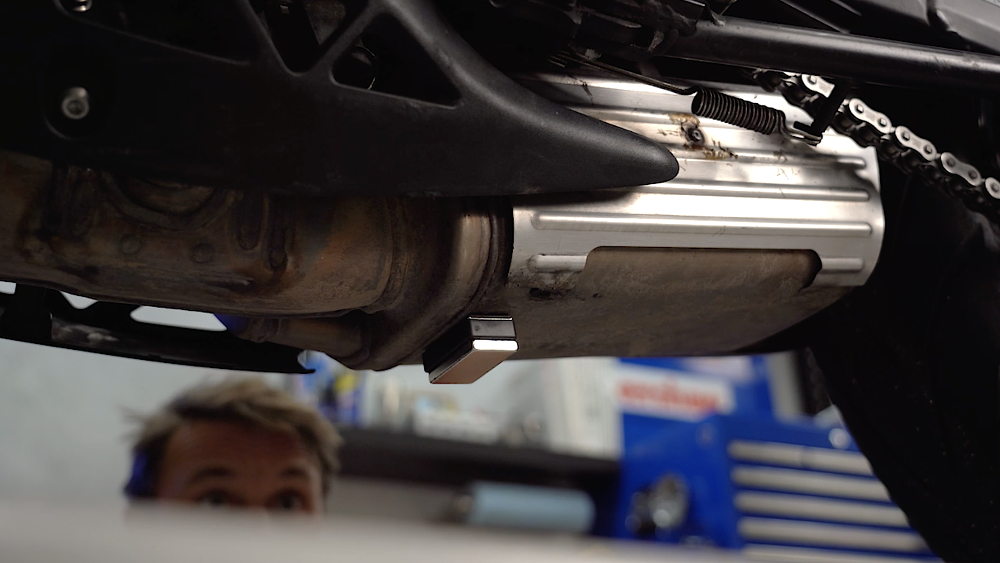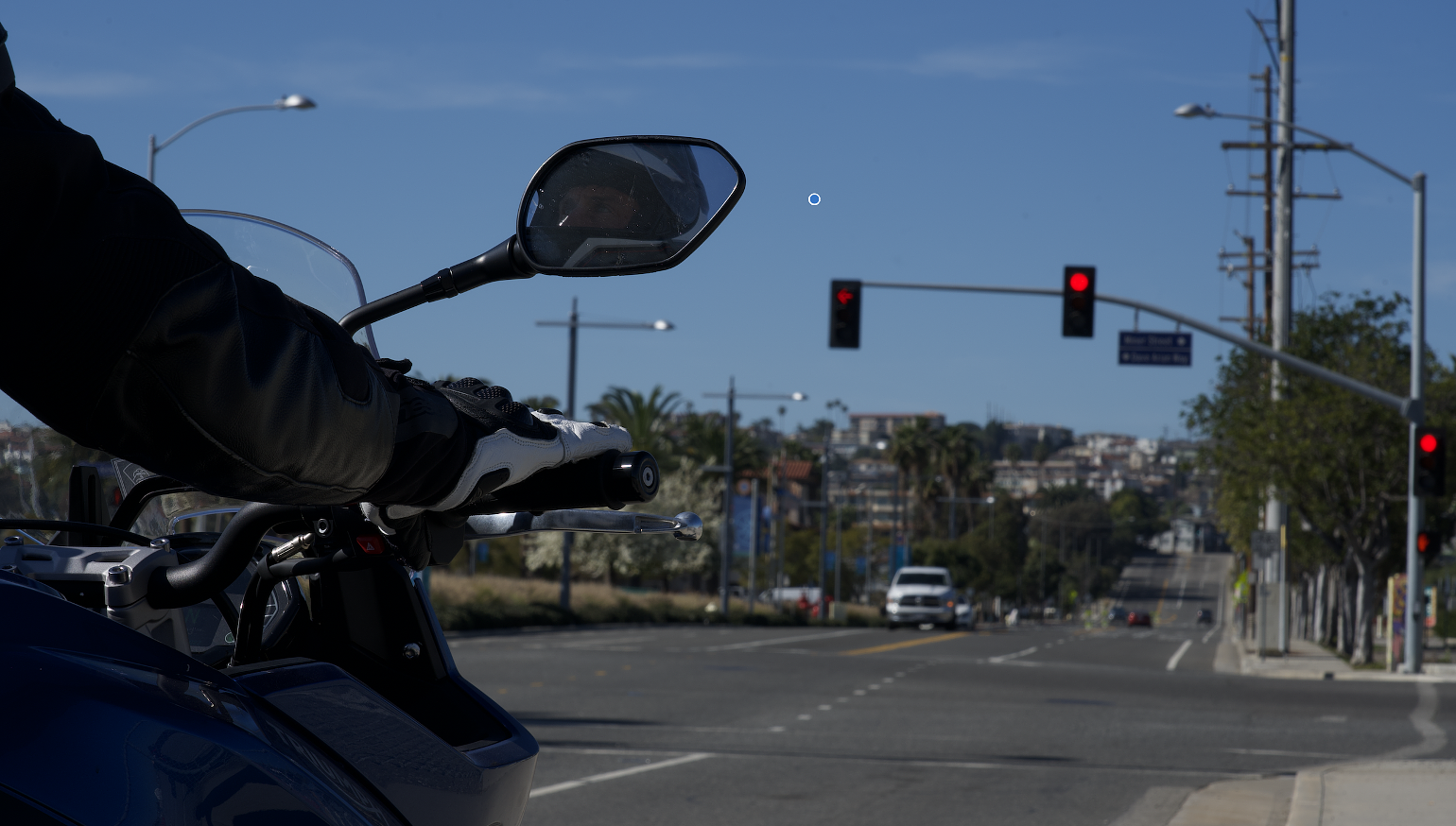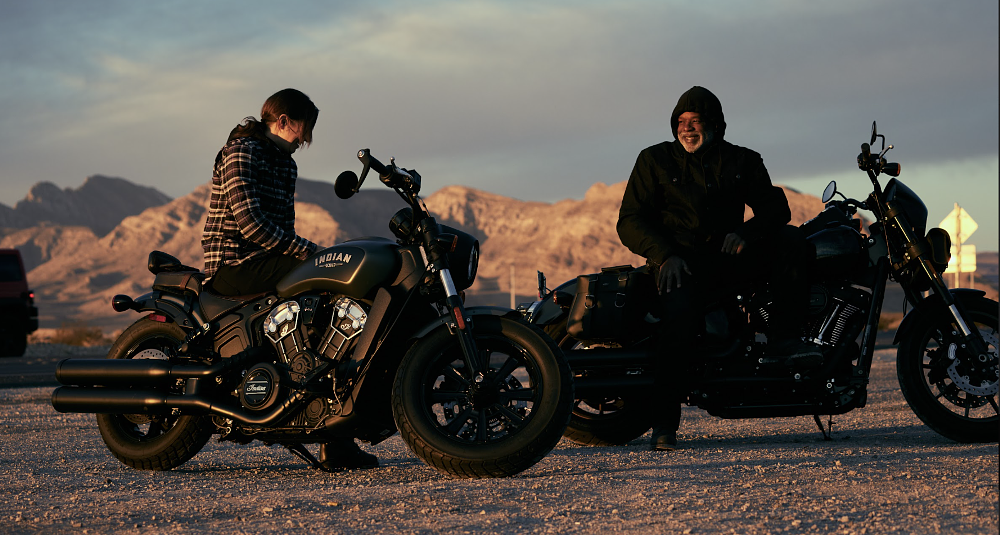Why is it that motorcycles have such a hard time at traffic signals, and more importantly, what can you do about it? Is it ever legal to run a red light, or are there any simple tricks that’ll get you the green?
These are age-old questions, stemming from a problem that has plagued motorcyclists since traffic lights began relying on in-ground sensors back in the 1960s.
Take a look at any intersection and you’ll likely see circles or squares cut in the pavement a few feet back from the stop line. Those tar-filled traces are from the installation of inductive-loop detectors, which are what the majority of traffic lights use to tell if a vehicle is present. (Other less common options for traffic-light control are timers, video monitoring, or radar.)
Contrary to urban myths, the detectors don’t rely on pressure sensors that measure the weight of vehicles, and there are no permanent magnets in the ground that interact with the steel and iron in a vehicle’s engine and chassis. Magnetism, or more accurately electromagnetism, does have something to do with it, though.
What’s down there in the asphalt is just two or three loops of wire, usually 12- to 16-gauge stranded-copper stuff just like the wires that power your bike’s headlight. Except in the ground they’re carrying AC current with a frequency of 20 to 30 kHz, and as per some 19th century scientists by the name of Lenz and Faraday, current flowing through a coil creates a magnetic field, which in turn induces current and a separate magnetic field in any conductive material that’s nearby.

What that means is that when a vehicle stops at an intersection, the loop’s electromagnetic field imparts a current in the car. That current then induces a magnetic field in the car, which affects the frequency of the current in the coil. The controller in a nearby cabinet registers the change in frequency and recognizes that a vehicle is waiting at the signal.
It’s a bit of a tail-wagging-the-dog-wagging-the tail scenario, but ultimately inductive-loop detectors are a good solution since they work with any conductive material, like aluminum, rather than relying on ferromagnetic materials like iron and steel. However, the size of the conductive mass and its distance from the ground play a big role in detection, so while cars and trucks and some bigger, lower bikes, like a Harley-Davidson Road Glide or a Honda Gold Wing, don’t have trouble tripping lights, many smaller or taller bikes do, which can leave you waiting.
Luckily, every loop sensor has a sweet spot where the sensitivity is higher, so you can usually get a green by simply stopping in the right location. For standard circular and square detectors, called dipole loops, sensitivity is higher along the perimeter, and it’s highest where the lead-in wire joins the loop. Park over that, with as much of your bike over the edge of a round loop or along the straight run of a rectangular loop, and you’ll increase your chances of tripping the sensor. However, positioning yourself like this may place you closer to moving traffic in adjacent lanes, or force you to put a boot down in the center of a lane, which can be slick with leaked oil or coolant, so be careful.

For double-loop sensors, also known as quadrupole loop detectors, sensitivity is actually highest in the center of the lane. If the lines look like two narrow rectangles pressed together, or there are diagonal sawcuts across the interior of the loop, it’s a quadrupole detector, and you’re best off stopping right in the middle.
If optimizing your bike placement doesn’t do the trick, you may need to wave the car behind you forward so they’re over a loop. Or, if there’s no larger vehicle around to help, you might revert to some age-old light-tripping technique, like putting your sidestand down on the cut line, which I’ve had good luck with. Or, some people swear by revving their engines so the charging system spins faster, while others say cycling your starter will do the trick. Both strategies do create an intense magnetic field, but in practice it’s too small and too far away to affect the sensor. Plus, shutting the bike off, even for a moment, would make me feel vulnerable, and you’re going to look like an idiot revving your bike at a red light.
Then, you’ve likely heard about some device or accessory that is guaranteed to trigger a green light. All the gadgets I’ve seen are just powerful permanent magnets that you stick to the bottom of your bike, and similar to revving your engine or cycling your starter, the idea is that the magnetic field will trip the detector in the ground.

Unfortunately, I haven’t found these to work reliably, either. I even called and e-mailed the company to discuss its claims, but they never got back to me. So green light gadgets, at least in my experience, aren’t a solution.
In the end, if the light refuses to change for you, you could just run it. Seriously. Depending on where you live, it might be allowed. There are currently 12 states including Arkansas, Idaho, Illinois, Minnesota, Missouri, Nevada, North Carolina, Oklahoma, South Carolina, Tennessee, Virginia, and Wisconsin, that have “dead red” laws that allow motorcyclists to proceed on a red light. These laws vary by state, so make sure you know the specifics before utilizing them.

However, if you’re like me and live in a state where the power of the red light is almighty and you’re never legally allowed to proceed, then your options are: careful bike placement, some engine-revving-magnet-applying-salt-over-the-shoulder trickery that may or may not help depending on your bike and the specific intersection, or maybe you just run over and press the crosswalk button.
Or, if you want to take matters into your own hands and actually solve the problem for you and every other rider that travels that route, call your town or city’s department of public works and report the problem. The sensitivity of the inductive loop detectors is adjustable, and there are people whose job it is to make sure the traffic lights work properly for all vehicles, including motorcycles.













